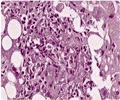Scientists are planning to put aerosols into the atmosphere to chemically unlock the greenhouse effect and allow more of the sun’s reflected heat to radiate back into space, thus reducing the effects of global warming.
According to a report in Discovery News, the idea has been put forward by David Keith from the University of Calgary’s Energy and Environmental Systems Group, and his colleagues.Scientists are concerned that Earth is growing increasingly warm due to “greenhouse gases,” such as carbon dioxide, in the atmosphere that inhibit the planet’s ability to radiation heat into space.
Human-related activities, such as burning fossil fuels, are believed to be accelerating the planet’s accumulation of greenhouse gases, even though naturally occurring phenomena such as volcanic eruptions and fires account for 97 percent of carbon dioxide in the atmosphere.
“Even if we stopped emissions instantly today, we still have enough CO2 in the atmosphere that it is possible we would have unacceptable levels of climate risk,” said Keith.
“While we may be lucky and find climate only warms by a degree or so, we may be unlucky and find it’s more like five or six (degrees). We’re not going to know until we’ve put enough CO2 to make an irreversible decision,” he added.
Keith and colleagues want to investigate putting aerosols, such as sulfur, into the atmosphere to chemically unlock the greenhouse effect and allow more of the sun’s reflected heat to radiate back into space.
Advertisement
From an engineering standpoint, scientists have looked at a variety of systems to deliver the goods, including high-altitude aircraft, such the military’s KC135 tankers used to refuel fighter jets, balloons, artillery, even a space elevator.
Advertisement
“No one has actually looked at what would happen if you tried to put these materials into the stratosphere,” said Richard Turco, with the Department of Atmospheric and Oceanic Sciences at the University of California in Los Angeles.
Scientists disagreed on whether atmospheric seeding to change the climate could be successful on a regional level, or if any initiatives must be globally based to be effective.
They were united, however, in calling for a focused research effort.
“There’s very little funded research (about) managing the risks of climate change,” Keith said.
Source-ANI
SRM











